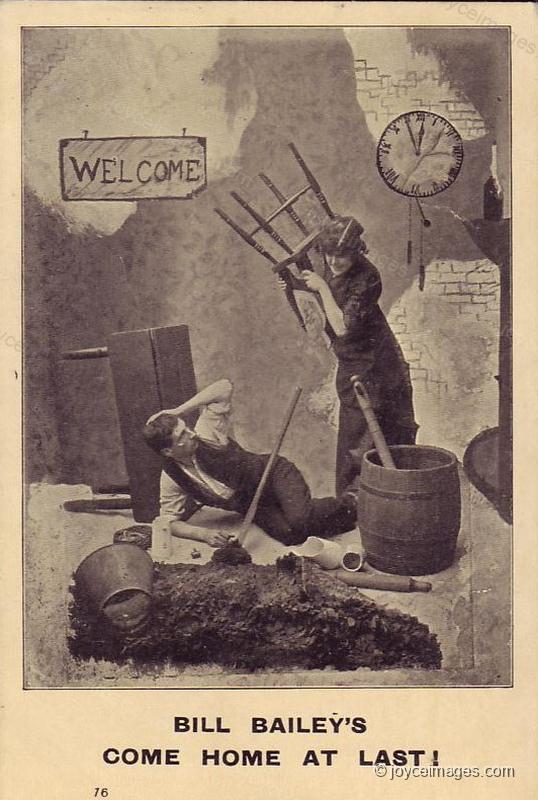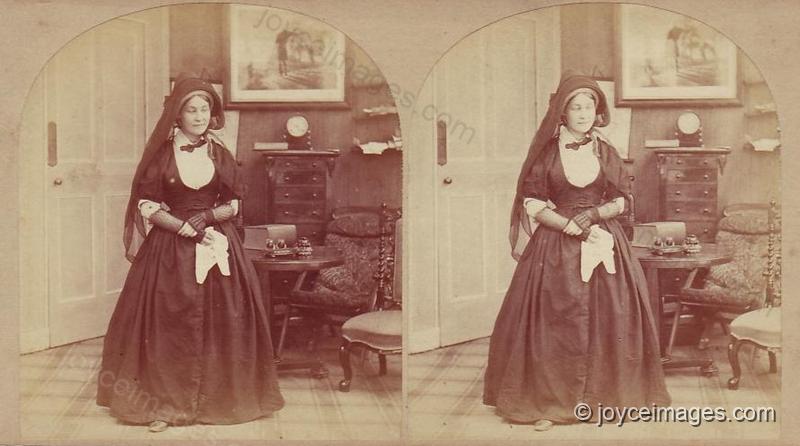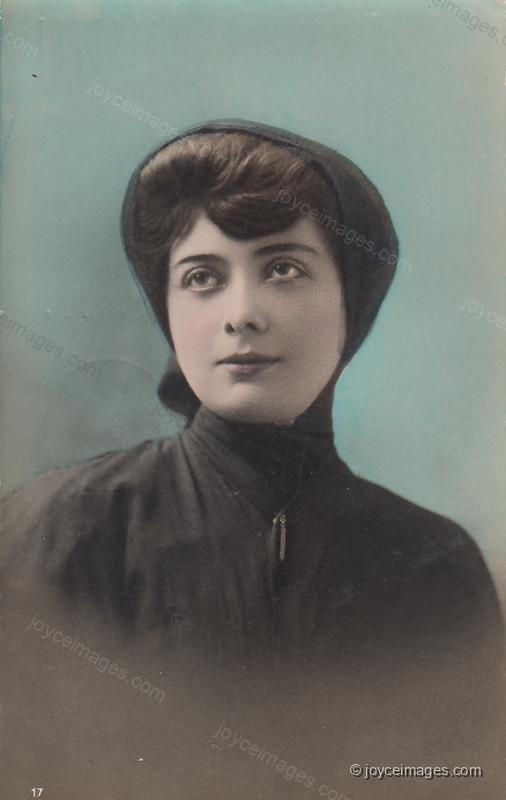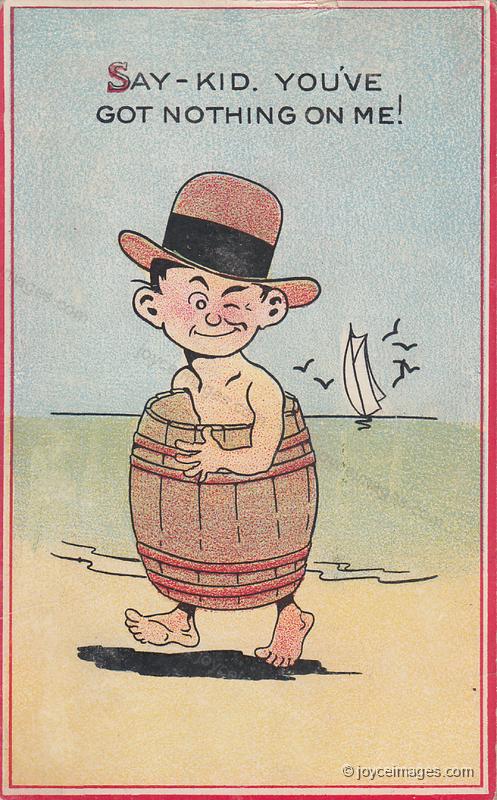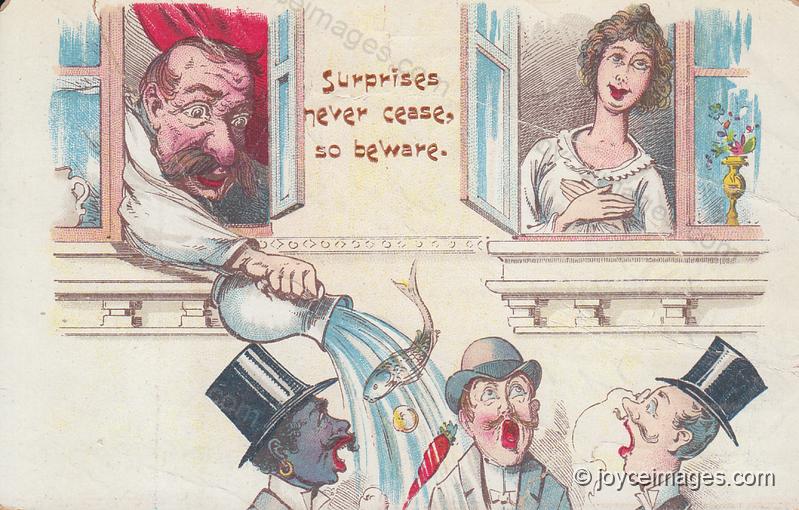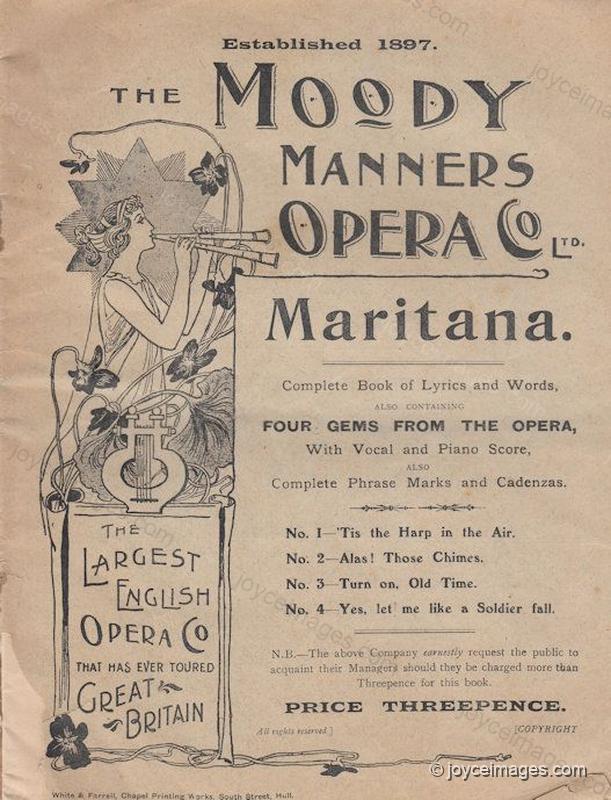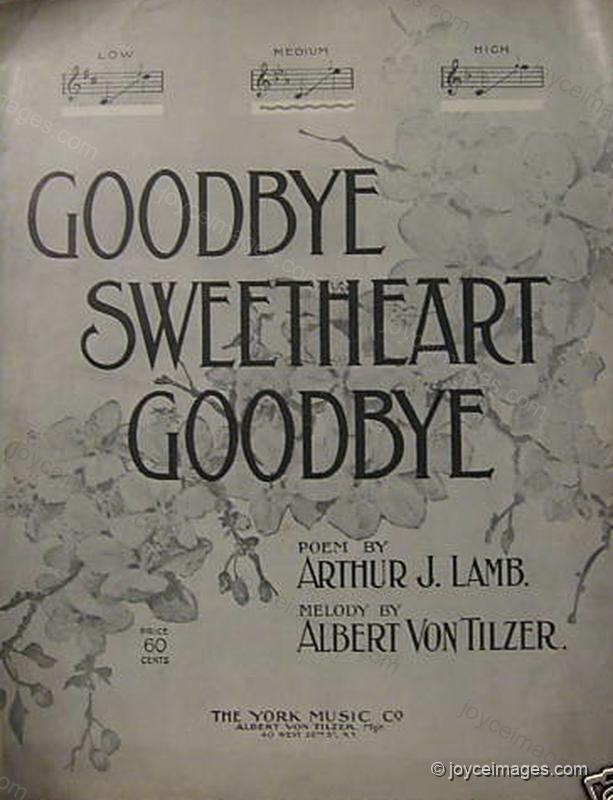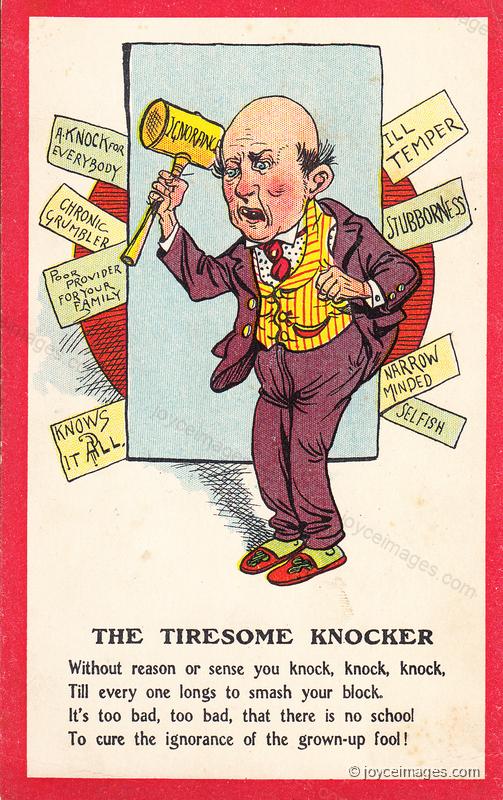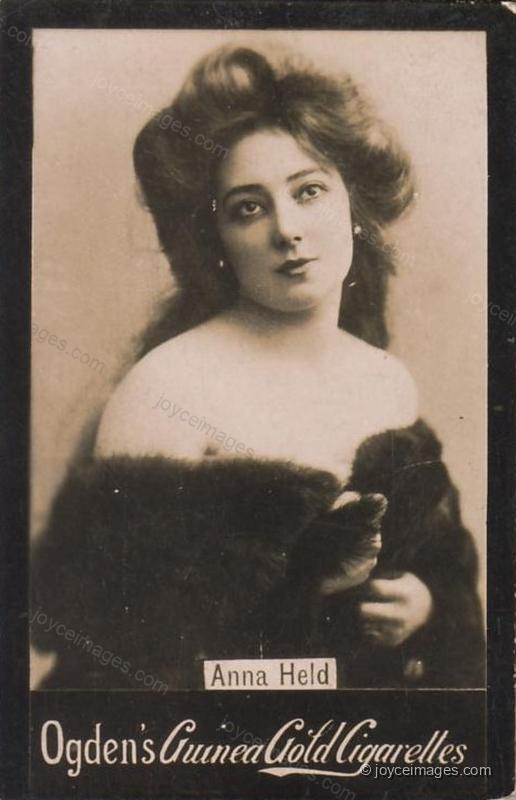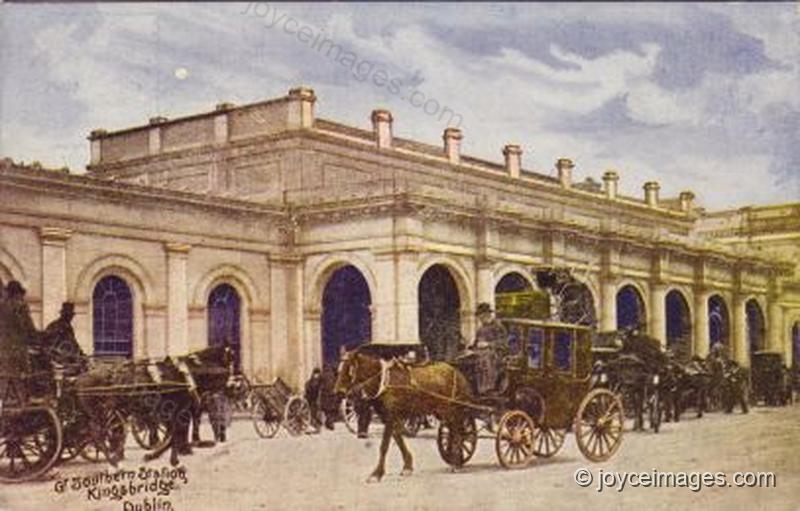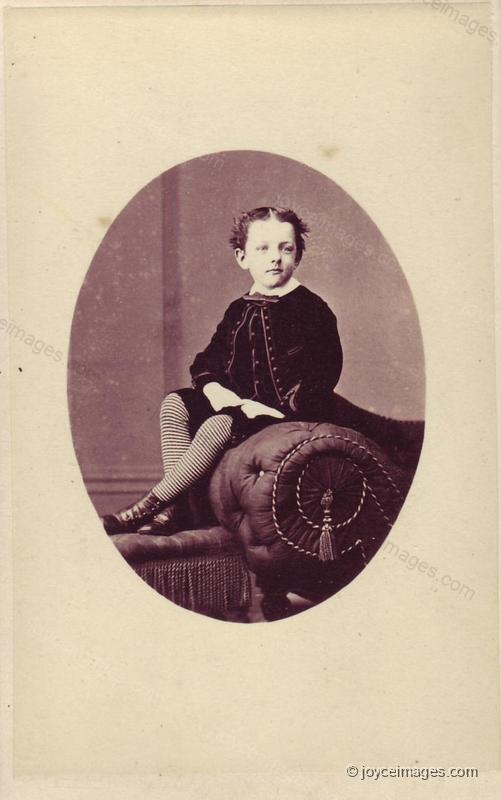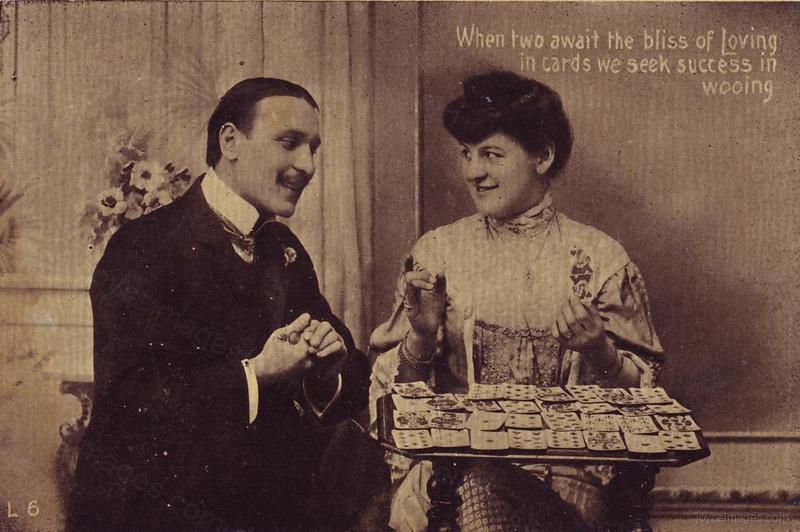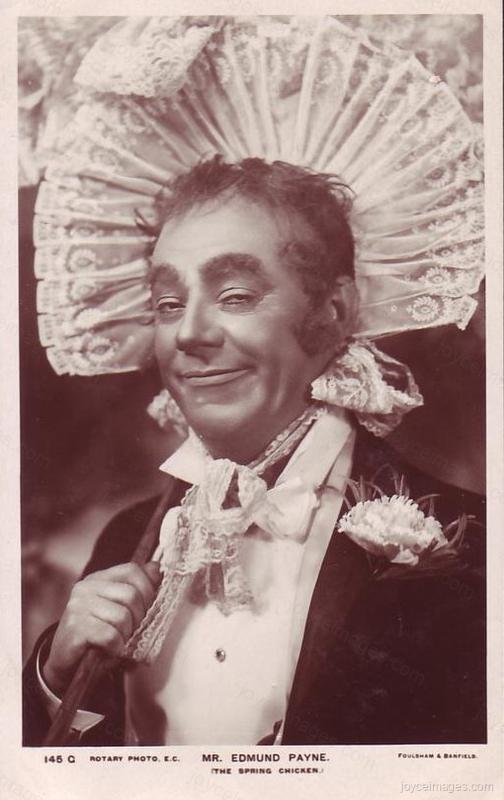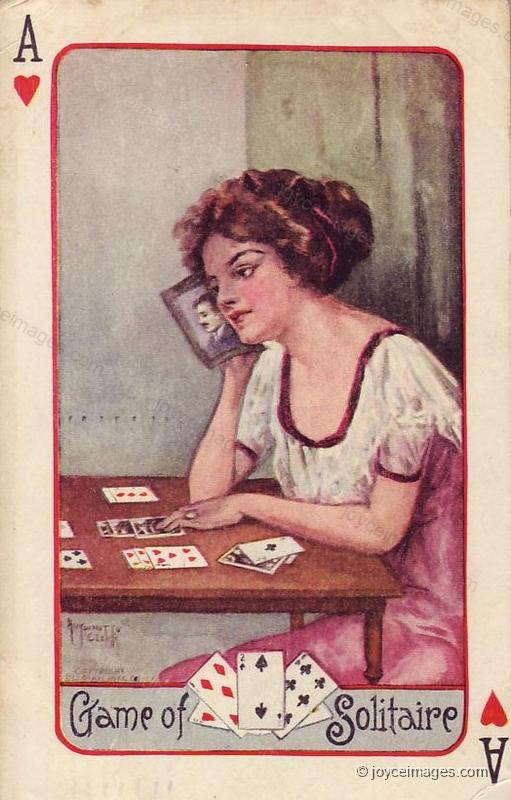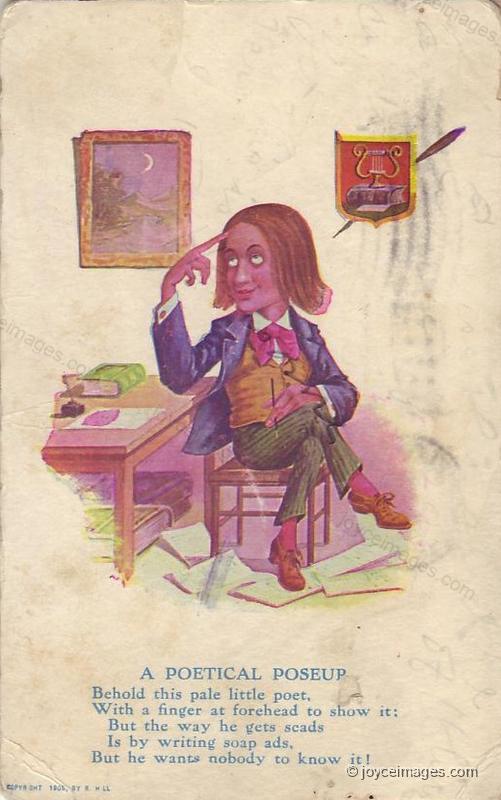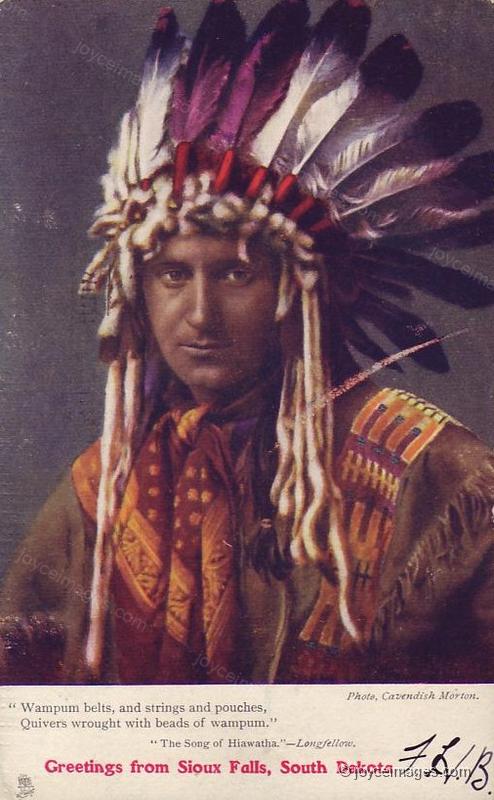"Bill Bailey wont you please come home" (U18.1282)
'Bill Bailey, Won't You Please Come Home' is a popular song published in 1902. Its words and music were written by Hughie Cannon (1877 - 1912), an American songwriter and pianist. The woman in the song has thrown out her abusive husband, and now is calling him back:
"Won't you come home Bill Bailey, won't you come home?
She moans the whole day long.
I'll do the cooking darling, I'll pay the rent;
I knows I've done you wrong..."
'Bill Bailey, Won't You Please Come Home' is a popular song published in 1902. Its words and music were written by Hughie Cannon (1877 - 1912), an American songwriter and pianist. The woman in the song has thrown out her abusive husband, and now is calling him back:
"Won't you come home Bill Bailey, won't you come home?
She moans the whole day long.
I'll do the cooking darling, I'll pay the rent;
I knows I've done you wrong..."
"theyre awfully becoming though if youre goodlooking what men wasn't yes he was at the Glencree dinner" (U18.1283)
"and Ben Dollard base barreltone the night he borrowed the swallowtail to sing out of in Holles street squeezed and squashed into them and grinning all over his big Dolly face like a wellwhipped childs botty didnt he look a balmy ballocks sure enough that must have been a spectacle on the stage imagine paying 5/- in the preserved seats for that to see him trotting off in his trowlers" (U18.1285)
"and Simon Dedalus too he was always turning up half screwed singing the second verse first the old love is the new was one of his so sweetly sang the maiden on the hawthorn bough he was always on for flirtyfying too" (U18.1290)
The song that Simon Dedalus sings half screwed, as discovered by Harald Beck, is "The Old Love and the New" by Frederic H. Cowen ((1852-1935). For the full text, see his article Two Unidentified Songs in the Penelope Episode in the James Joyce Online Notes.
The song that Simon Dedalus sings half screwed, as discovered by Harald Beck, is "The Old Love and the New" by Frederic H. Cowen ((1852-1935). For the full text, see his article Two Unidentified Songs in the Penelope Episode in the James Joyce Online Notes.
"when I sang Maritana with him at Freddy Mayers private opera he had a delicious glorious voice Phoebe dearest" (U18.1293)
"goodbye sweetheart sweet heart he always sang it not like Bartell Darcy sweet tart goodbye of course he had the gift of the voice so there was no art in it all over you like a warm shower bath O Maritana wildwood flower we sang splendidly though it was a bit too high for my register even transposed and he was married at the time to May Goulding" (U18.1295)
"but then hed say or do something to knock the good out of it hes a widower now I wonder what sort is his son he says hes an author and going to be a university professor of Italian and Im to take lessons" (U18.1299)
"what is he driving at now showing him my photo its not good of me I ought to have got it taken in drapery that never looks out of fashion still I look young in it I wonder he didnt make him a present of it altogether and me too after all why not" (U15.1302)
"I saw him driving down to the Kingsbridge station with his father and mother I was in mourning thats 11 years ago now yes hed be 11 though what was the good in going into mourning for what was neither one thing nor the other the first cry was enough for me I heard the deathwatch too ticking in the wall of course he insisted hed go into mourning for the cat" (U18.1305)
"I suppose hes a man now by this time he was an innocent boy then and a darling little fellow in his lord Fauntleroy suit and curly hair like a prince on the stage when I saw him at Mat Dillons he liked me too I remember they all do " (U18.1310)
'Little Lord Fauntleroy' was an immensely popular novel by Frances Hodgson Burnett, serialized in St. Nicholas Magazine in 1885, and separately published in 1886. Burnett introduces her hero as "a graceful, childish figure in a black velvet suit, with a lace collar, and with love locks waving about the handsome, many little face." The text, and illustrations by Reginal Birch, started a 'Lord Fauntleroy' fashion craze that spanned the late 19c. and early 20c. It affected mostly boys 3-8 years of age. A typical Lord Fauntleroy outfit was a black velvet suit with a lace collar, sashes and short knee-pants. A hat (often a broad-brimmed sailor hat, or a tam), long hair with ringlet curls or bangs, black stockings, or patent strap shoes were often added. Stephen must have been 11 (unusually old) when Molly saw him thus dressed. This CDV shows an Irish little Lord Fauntleroy from Belfast.
'Little Lord Fauntleroy' was an immensely popular novel by Frances Hodgson Burnett, serialized in St. Nicholas Magazine in 1885, and separately published in 1886. Burnett introduces her hero as "a graceful, childish figure in a black velvet suit, with a lace collar, and with love locks waving about the handsome, many little face." The text, and illustrations by Reginal Birch, started a 'Lord Fauntleroy' fashion craze that spanned the late 19c. and early 20c. It affected mostly boys 3-8 years of age. A typical Lord Fauntleroy outfit was a black velvet suit with a lace collar, sashes and short knee-pants. A hat (often a broad-brimmed sailor hat, or a tam), long hair with ringlet curls or bangs, black stockings, or patent strap shoes were often added. Stephen must have been 11 (unusually old) when Molly saw him thus dressed. This CDV shows an Irish little Lord Fauntleroy from Belfast.
"wait by God yes wait yes hold on he was on the cards this morning when I laid out the deck union with a young stranger neither dark nor fair you met before" (U18.1313)
"besides my face was turned the other way what was the 7th card after that the 10 of spades for a journey by land then there was a letter on its way and scandals too the 3 queens and the 8 of diamonds for a rise in society yes wait it all came out and 2 red 8s for new garments look at that" (U18.1316)
"and didnt I dream something too yes there was something about poetry in it I hope he hasnt long greasy hair hanging into his eyes" (U18.1320)
